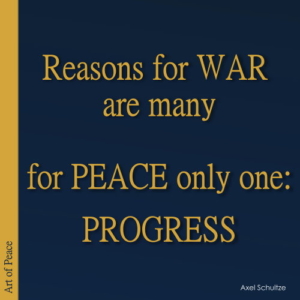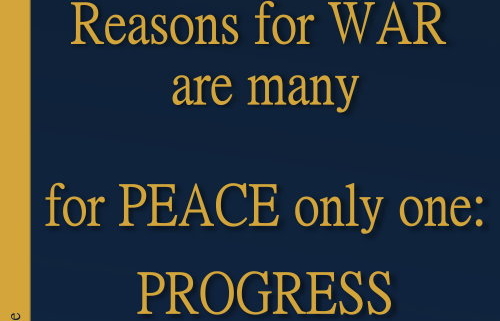This is also about civil courage, which too many lack.
Six years ago, I wrote about 2019 as an ‘interesting year to come‘. Little did I know what was really coming. I just had this feeling.
Abusing or Defending Political Power
The 333 rule addresses social and political human group behavior. It was derived from the 90-9-1 rule, which describes community behavior. Community behavior is an important learning tool when building social media communities. 90-9-1 is the percentage of people with rather typical behavior.
- 1% are drivers of content, engaging others. The Content Creators.
- 9% are engaged, commenting, and sharing content with others. The advocates and top supporters.
- 90% are information consumers. They are silent, reading, listening, learning, and using the content independently.
In the early days of social media, the-90% were called stalkers, bad members, parasitic, like day traders at the stock exchange who never contribute to the economy and only live from the misery of others.
Over time, however, we have come to understand that this is not just a community phenomenon but a human behavior in general. More importantly, it is human behavior in a group of humans that only a few chose, and the majority was drawn into it. And even then, the 90-9-1 rule applies. One community is growing by 10% of the members, including the community’s founder, and is attracting the other 90%.
What has the 90-9-1 rule to do with the 333
It’s the <<human behavior and its ratio>>.
In a true democracy, the 333 rule is the essence of democratic existence. If that number is cracked from the outside, democracy fails and ends up in a decade-long disaster with no way out. Here is why.
The Ratio is the Strategy to Maintain Political Peace
300 – 30 – 3
300 can be won for anything
30 are the ones who fight for the believe of 3
3 are the drivers for a vision of which one is a balancer
This model needs only four conditions
1) All 300 live and work in the same system, and only those can vote about anything within the system.
2) All members need to have a good political base education.
3) All members need to be aware of this mechanism, the function of its ratio, and human behavior.
4) All members need to be very careful about influence from the outside.
Example of a Strategy to Maintain Political Peace
Switzerland, one of the most prosperous, wealthy, autonomous, and neutral countries in the world. Switzerland has maintained a policy of armed neutrality since the 16th century and has not fought an international war since 1815 — over 200 years.
Example of Risking that Political Peace
However, underground influence in Switzerland has risen significantly. Thoughts of becoming part of Europe, Spread fear that it can’t defend itself, and moral makeup that it has to contribute to the European Commission (not Europe) are vague arguments but the way to eventually break Switzerland. This risk has a long tail called “Time will tell”. Will we educate our children to educate their children to take it further with their children about what happened in WW1, WW2, and near WW3?
World War 3
We were extremely close to WW III; many didn’t even notice.
- 100 of the 300 thought this war probably must be fought
- 100 were not sure
- 100 were hoping that this war could be prevented
All 300 were waiting for what would happen - 10 agreed that the war must be fought as it was a good business, too.
- 10 argued that it is not sure if it must be fought.
- 10 fought against it.
- 1 fired the war machine as hard as possible and worked very hard to convince the 300—with 10 messengers and an enormous amount of money—that the population unwillingly and unknowingly paid.
- 1 tried to calm everybody down but was careful not to risk anything.
- 1 risked their lives to stop it, ended up in prison, and got tortured.
The 1, the 10, and the 100, together with 111, needed enormous civil courage to fight the 222 and stop the war.
Initially, that didn’t really work out – so we were at the edge.
Another 1o must have started a war against the other 111 who were not sure to win over the third 111.
That strategy against political war is an exceptional human capability
The strategy had already worked in 1961/2 during the Cuban crisis. Fidel Castro got Russia behind him to prevent taking over. And people were fearing that this would be WW 3. But John F. Kennedy was brave enough to stop it. And it cost his life.
This strategy did not work in Lybia. Muammar Gaddafi did not act until too late to involve Russia and others in helping.
The CIA was already best informed and had time to prevent the 333 rule from happening again, which was not known to Gaddafi. Apparently, many Swiss people do not know their progress is at stake.
Summary Strategy to Maintain Political Peace
Large countries can quickly take over small countries by undermining the political rulers and forcing the entire country to do what the intruder likes. In some cases, war is not even necessary. Democratic countries are especially endangered due to the freedom of choice and the freedom to build political groups that can be elected based on public votes. An intruder only needs to do the following:
What intruders do relatively quickly:
- Offer support to “10” (33%) leaders of the “333” (100%) of the population.
Ideally, select those who are always against anything and get paid for it. - Instead of winning the 111 opposing, winning the other 10 undecided middle.
- No matter how well said and logically argued. the ambitious and corrupted 20 will be enough to be the majority.
- Buying the respective mainstream media is a piece of cake in all this.
Defenders need to be aware of these mechanics:
- How much political influence comes from the outside
- What is that influence about
- How would it change the foundation independent of current progress
- Use all your common sense to assess the suggested change
Sidenote: Those who know me know that my last name could be ‘Change’.
However, there are areas where change is not only no progress but the opposite.
What else you should know to keep your lifestyle
Many of the far deeper details are publicly available and declassified books at the Orell Füssli Verlag Schweiz, including:
- Simple Sabotage Field Manual (US Army/CIA)
- Provisional Manual for Ordnance Field Service
- US Army Field Manual 7-93 Long-Range Surveillance Unit Operation
- Sabotage und Psychologische Kriegsführung
At this point, a big kudos to OrellFüssli, who maintains this level of Civil Courage that so many lack.

P.S. Strategic Reason for Peace
During my neuroscience studies, I found an interesting behavior of our brain. It does not understand negation. When you think every day that you don’t want to die, you risk your life more than in any other circumstance. Wanting peace because you don’t want to die is simply not working. Finding a real reason for peace requires first identifying that reason. That is the underlying material of war as well. Wanting another country is a simple and achievable reason. The beauty is that “Wanting progress for humanity” supersedes any war because you are progressing with the world – not with warheads.
Part of my other book: “Art Of Peace“


